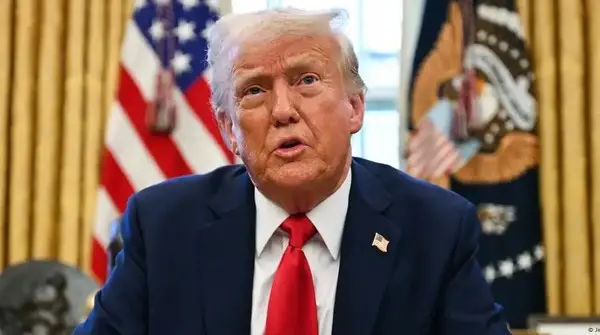In a bold move to overhaul federal spending, President Donald Trump’s Department of Government Efficiency (DOGE) has reportedly saved a staggering $55 billion by cutting wasteful expenditures. Now, with the support of tech mogul Elon Musk, the initiative is eyeing even larger savings—projecting up to $2 trillion in waste eliminated over time. According to Trump’s proposal, 20% of these savings, approximately $5,000 per household, could be distributed directly to American taxpayers, while another 20% would go toward reducing the national debt. If successful, the so-called “DOGE Dividend” could herald a major shift in government efficiency and fiscal policy.
The Vision Behind DOGE
Trump’s administration has long sought to streamline government operations, and DOGE is at the heart of that effort. The department’s mandate is clear: eliminate fraud, cut waste, modernize federal technology, and ultimately, make the government work smarter for the American people. Recent audits have uncovered exorbitant expenses—from unnecessary luxury office items to redundant services—demonstrating that significant savings were achievable.
By targeting these inefficiencies, DOGE has already saved $55 billion, a figure that many see as a promising indicator of what could be achieved on a larger scale. The ultimate goal is to unlock a projected $2 trillion in savings, an ambition that underscores the administration’s determination to reshape federal fiscal policy.
The DOGE Dividend Proposal
One of the most groundbreaking aspects of this initiative is the proposal known as the “DOGE Dividend.” According to Trump, if 20% of the $2 trillion in projected savings were returned directly to taxpayers, it would result in an average payout of around $5,000 per household. Another 20% of the savings is expected to be used to reduce the national debt—a move that could have far-reaching implications for the country’s long-term fiscal health.
This proposal represents a radical departure from traditional government budgeting, where surplus funds are typically reinvested into public programs or used to service existing debt. The idea of directly distributing a portion of the savings to the American people has struck a chord with many voters, who are increasingly frustrated with perceived government inefficiency and waste.
Elon Musk’s Role and Support
Elon Musk, known for his trailblazing work at Tesla and SpaceX, has become a key supporter of the DOGE initiative. Musk’s involvement brings a unique blend of technological innovation and entrepreneurial spirit to the table. Although his role is primarily advisory, his influence is evident in the aggressive cost-cutting measures championed by DOGE.
Musk has publicly praised the initiative’s potential, arguing that government waste is a serious issue that needs to be addressed with modern technology and a results-driven approach. His backing lends a sense of credibility to the proposal, even as critics question its feasibility. Discussions between Musk and Trump have reportedly centered on how best to implement these reforms, though details remain sparse.
Feasibility and Challenges
While the prospect of a $2 trillion savings and a $5,000 per household payout is tantalizing, significant questions remain about the feasibility of achieving these targets. Skeptics point out that government spending is notoriously complex, with inefficiencies often deeply embedded in bureaucratic processes and institutional cultures. Achieving such dramatic cuts would require not only robust enforcement mechanisms but also a fundamental rethinking of how federal agencies operate.
Critics also warn of potential unintended consequences. Drastic cuts could impact essential services if not carefully managed, and the distribution of surplus funds directly to taxpayers may face legal and logistical hurdles. Additionally, there are concerns about the transparency of the savings calculations and whether projected figures can be reliably realized in practice.
Political and Public Reactions
The DOGE Dividend proposal has already sparked heated debates on social media and in political circles. Supporters argue that returning taxpayer dollars directly to American families is a long-overdue step toward fiscal responsibility. They view the proposal as a win for common citizens who bear the brunt of government waste. “Finally, some money back in our pockets!” one enthusiastic commenter declared online.
Opponents, however, caution that the plan is overly optimistic and potentially disruptive. They warn that focusing too much on cost-cutting could undermine essential services and that the $2 trillion savings projection might be more aspirational than realistic. Political pundits on both sides of the aisle are watching closely, as the success or failure of the DOGE initiative could set a new precedent for government budgeting and efficiency reforms.
Broader Implications for U.S. Fiscal Policy
If implemented successfully, the DOGE Dividend could mark a major shift in how government efficiency is measured and rewarded. The concept of directly returning a portion of savings to taxpayers challenges the traditional paradigms of federal budgeting. It suggests a future where government efficiency is not only about reducing waste but also about ensuring that every dollar saved directly benefits the public.
Moreover, the move could stimulate a broader debate about the role of technology in government operations. By leveraging advanced data analytics and modern management practices, initiatives like DOGE could help create a more agile and responsive federal government—one that is better equipped to serve the needs of its citizens in an increasingly complex world.
The Road Ahead
As the Trump administration and its supporters continue to promote the DOGE initiative, the coming months will be critical in determining its success. Key questions include:
- Can federal agencies achieve the dramatic spending cuts needed to realize $2 trillion in savings?
- What safeguards will be put in place to ensure that essential services are not compromised?
- How will the logistics of distributing the DOGE Dividend to millions of households be managed?
Answering these questions will require a concerted effort from policymakers, technology experts, and public administrators alike. While the vision is ambitious, the road to realizing it is fraught with challenges that will test the resilience and adaptability of the federal government.
Conclusion: A Bold Experiment in Government Efficiency
President Trump’s Department of Government Efficiency has already demonstrated the potential for significant cost savings, with $55 billion reportedly cut from wasteful spending. The proposal to return 20% of a projected $2 trillion in savings directly to taxpayers—as well as using another 20% to reduce the national debt—represents a bold experiment in reshaping fiscal policy. With Elon Musk’s support and a new focus on leveraging technology for efficiency, the DOGE Dividend could be a game-changer.
Yet, as with any ambitious reform, the proposal faces its share of skepticism. Critics question the feasibility of achieving such savings and worry about the possible consequences of drastic cost-cutting. As the debate continues, one thing remains clear: the future of government efficiency in the United States is poised for transformation.
What are your thoughts on the DOGE Dividend? Can the federal government realistically save $2 trillion, and should a portion of those savings be returned directly to taxpayers? Share your opinions on Facebook and join the conversation as we explore this bold vision for a more efficient government.
In a time when every dollar counts and accountability is paramount, initiatives like the DOGE Dividend represent a daring step toward reimagining government efficiency. Let’s continue the discussion and work together to ensure that public funds are used in ways that truly benefit the American people.

